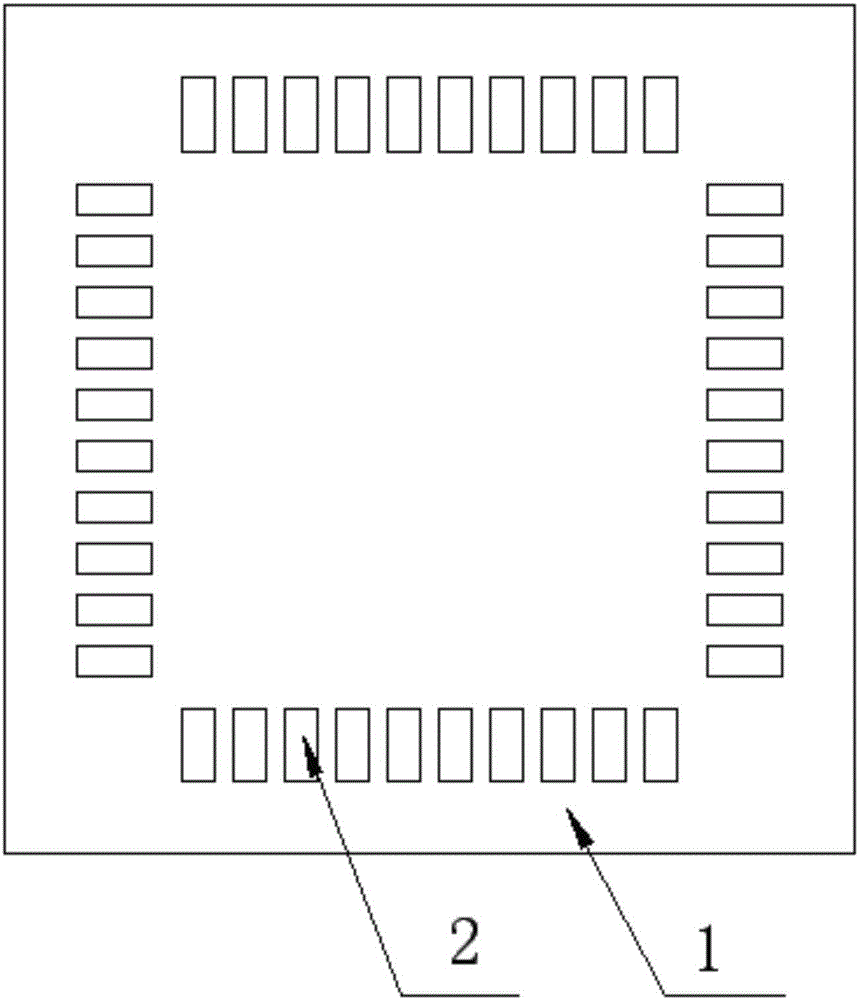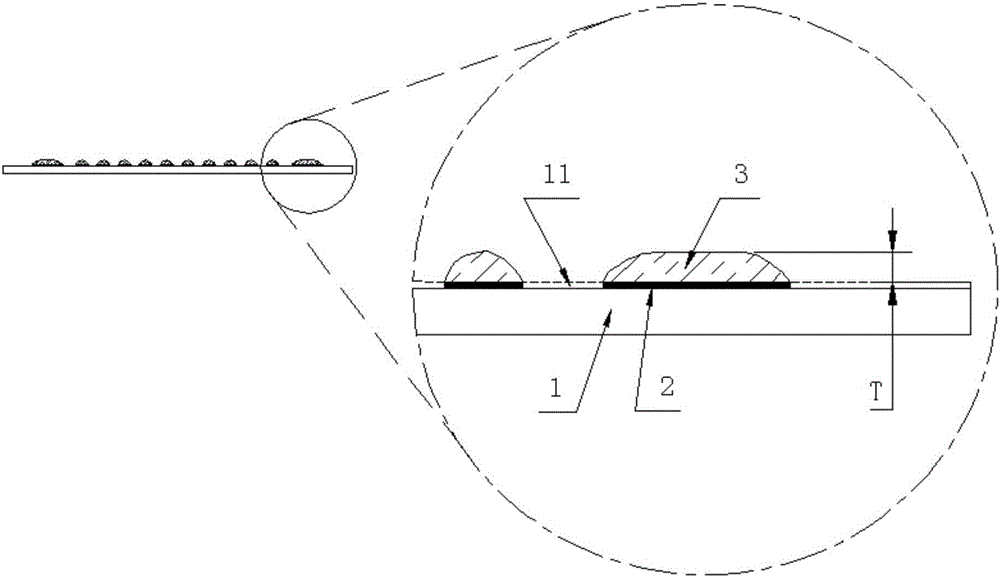Bottom gap welding method for LCCC apparatus
A technology of gap welding and devices, which is applied in the field of circuits, can solve problems such as failure of LCCC devices and PCB components, cracks in brittle LTCC shells, lack of size, etc., and achieve the effects of improving tangential deformation capacity, alleviating the influence of thermal stress, and improving fatigue life
- Summary
- Abstract
- Description
- Claims
- Application Information
AI Technical Summary
Problems solved by technology
Method used
Image
Examples
Embodiment Construction
[0031] The present invention will be further described below in conjunction with the accompanying drawings. The following examples are only used to illustrate the technical solution of the present invention more clearly, but not to limit the protection scope of the present invention.
[0032] The technical scheme of the patent application for the present invention is:
[0033] 1) Pre-soldering: Use a mask with a suitable thickness, and mount the pad 2 of the LCCC device on the PCB board 1 ( Figure 1a , Figure 1b ) printed a layer of tin-lead solder paste on the surface, and after the general reflow soldering and cleaning process, each pad of the PCB board is covered with a layer of thickness (the height above the solder mask layer 11 on the upper surface of the PCB board) is T, thickness Solid tin-lead solder layer with good uniformity 3 ( Figure 2a , Figure 2b );
[0034] 2) Dispensing SMT adhesive: use SMT dispensing machine, set appropriate dispensing parameters, an...
PUM
| Property | Measurement | Unit |
|---|---|---|
| Thickness | aaaaa | aaaaa |
| Thickness | aaaaa | aaaaa |
Abstract
Description
Claims
Application Information
 Login to View More
Login to View More - R&D
- Intellectual Property
- Life Sciences
- Materials
- Tech Scout
- Unparalleled Data Quality
- Higher Quality Content
- 60% Fewer Hallucinations
Browse by: Latest US Patents, China's latest patents, Technical Efficacy Thesaurus, Application Domain, Technology Topic, Popular Technical Reports.
© 2025 PatSnap. All rights reserved.Legal|Privacy policy|Modern Slavery Act Transparency Statement|Sitemap|About US| Contact US: help@patsnap.com



